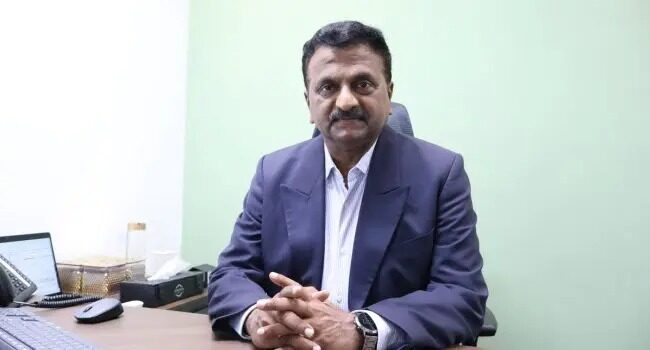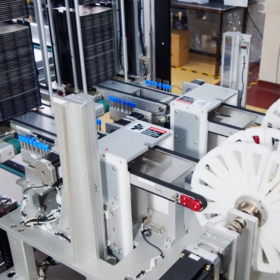India’s target of achieving 500 GW (gigawatts) of non-fossil fuel energy capacity by 2030 is an integral part for the country’s vision of a sustainable future. For more than a decade, the Inter-State Transmission System (ISTS) exemption has been the backbone of this transition, allowing renewable energy from desert suns and windy coasts to high-demand areas at lower costs, making it more accessible for commercial and industrial consumers. With the 100% waiver for wind and solar projects expiring on June 30, 2025, and being succeeded by a phase-in of charges, the renewable energy industry is at a critical crossroads. While this transition presents challenges, it also unlocks the potential for a more level playing field in the sector—encouraging broader regional participation and fostering inclusive energy growth across India.An even phase-down, complemented by well-designed policy support, is essential to maintain momentum..
The Role of ISTS Waivers in India’s Renewable Energy Surge
Since the ISTS waiver was initiated in 2016, it has spurred India’s renewable energy boom by exempting interstate solar, wind, and some energy storage projects from transmission charges. This policy has enabled resource-rich states like Rajasthan and Gujarat to supply affordable green energy to consuming areas, reducing delivery costs by about INR 0.70–0.80 per kWh, depending on the load and distance. It has opened up clean energy for a wider section, particularly for commercial and industrial (C&I) consumers, which account for 40–45% of electricity consumption in India but meet only 9% of their demands through direct renewable sourcing.
According to data from the Ministry of New and Renewable Energy as of June 2025, Gujarat came in second with 37,494 MW of cumulative renewable capacity, while Rajasthan had 37,818 MW, comprising solar and wind projects. Together, the two states contribute over 35% of India’s renewable capacity of 235 GW due to their Resource rich geography and incentives like the ISTS waiver.
The recent extension of complete waivers for hydro pumped storage projects (PSPs) and associated battery energy storage systems (BESS) until June 30, 2028, reflects the need for continued support for emerging technologies since storage is aimed at addressing the intermittent nature of renewable power. On the other hand, the gradual phase-out of ISTS charges waiver for solar and wind projects–75% for projects commissioned by June 30, 2026, 50% by June 30, 2027, and 25% by June 30, 2028, and zero thereafter–is bound to push up final price for end consumers. The shift could increase tariffs by INR 0.40–0.50 per kWh, which is around 17% hike for solar projects auctioning at INR 2.40–2.50 per kWh.
The Opportunity in a Phased Transition
The phase-out of the ISTS waiver, while challenging, is a chance to spread clean energy development beyond traditional hubs. States like Rajasthan and Gujarat have long dominated due to their natural advantages and the waiver’s cost benefits. The Electric Power Transmission Association (EPTA) notes that a gradual phase-out encourages developers to explore untapped areas, promoting job creation and regional empowerment. This aligns with India’s vision of balanced development, where clean energy becomes a shared story across diverse geographies.
Secondly, when renewable energy projects and consumers, including industries, are located in the same state, interstate transmission charges will be eliminated, helping to keep renewable energy prices competitive. Additionally, with advancing technologies and the use of equipment like solar trackers, the output of solar power plants in India’s interior regions is expected to improve in the coming years.
Refining the Path Forward
The government’s supportive policies, including the ISTS waiver, have been instrumental in catalysing the renewable energy sector, making clean energy more affordable and scalable. While the ISTS waiver has significantly contributed to expanding renewable energy capacity, it is now time for the industry to move beyond this incentive. Therefore, it is crucial to establish more solar and wind plants across states like Madhya Pradesh, Uttar Pradesh, Odisha, Telangana, and Andhra Pradesh.
In essence, it’s not merely about installing solar panels and wind turbines in new states—it’s about ensuring equitable participation in the energy revolution. Supporting previously underserved geographies enables inclusive progress and sustains India’s clean energy ambitions.
As India strives to achieve its ambitious sustainable development goals, including universal access to clean energy and a net-zero future, such coherent and stable policies will solidify its position in the clean energy shift, guaranteeing a future that is both green and equitable for all.
The views and opinions expressed in this article are the author’s own, and do not necessarily reflect those held by pv magazine.
This content is protected by copyright and may not be reused. If you want to cooperate with us and would like to reuse some of our content, please contact: editors@pv-magazine.com.








By submitting this form you agree to pv magazine using your data for the purposes of publishing your comment.
Your personal data will only be disclosed or otherwise transmitted to third parties for the purposes of spam filtering or if this is necessary for technical maintenance of the website. Any other transfer to third parties will not take place unless this is justified on the basis of applicable data protection regulations or if pv magazine is legally obliged to do so.
You may revoke this consent at any time with effect for the future, in which case your personal data will be deleted immediately. Otherwise, your data will be deleted if pv magazine has processed your request or the purpose of data storage is fulfilled.
Further information on data privacy can be found in our Data Protection Policy.